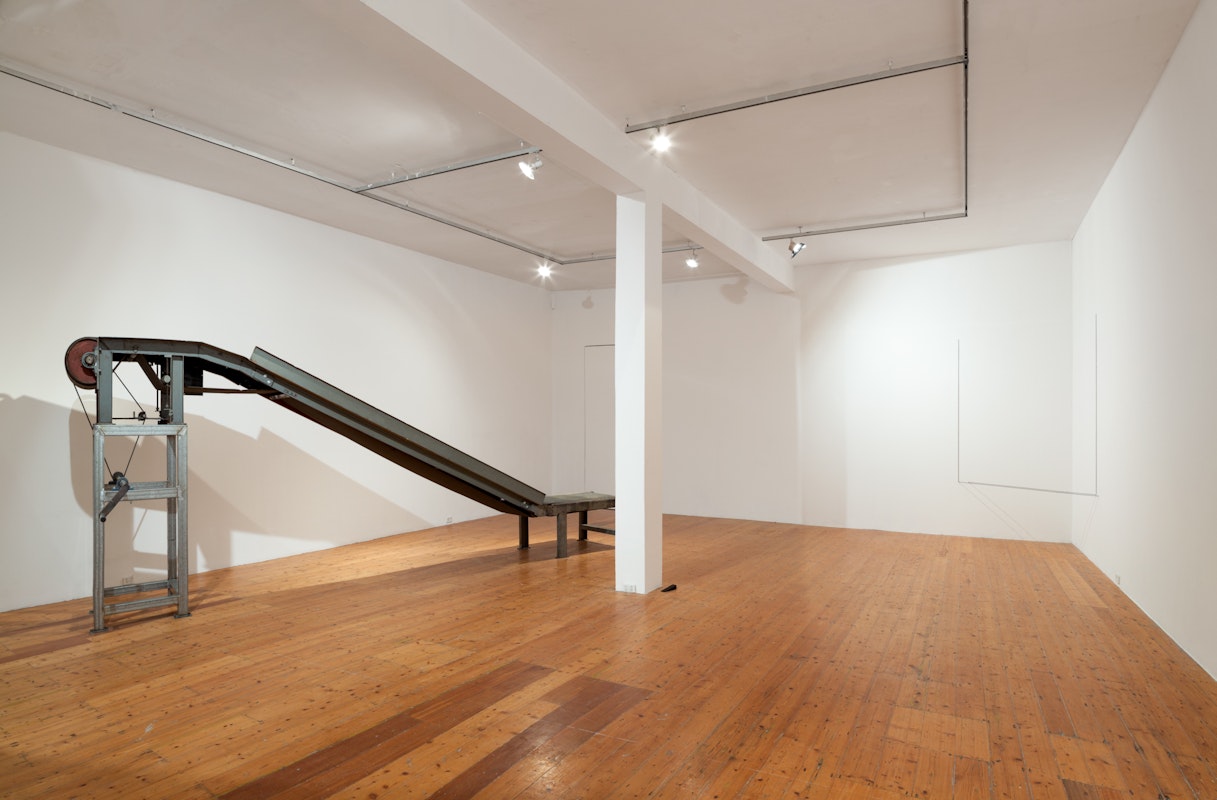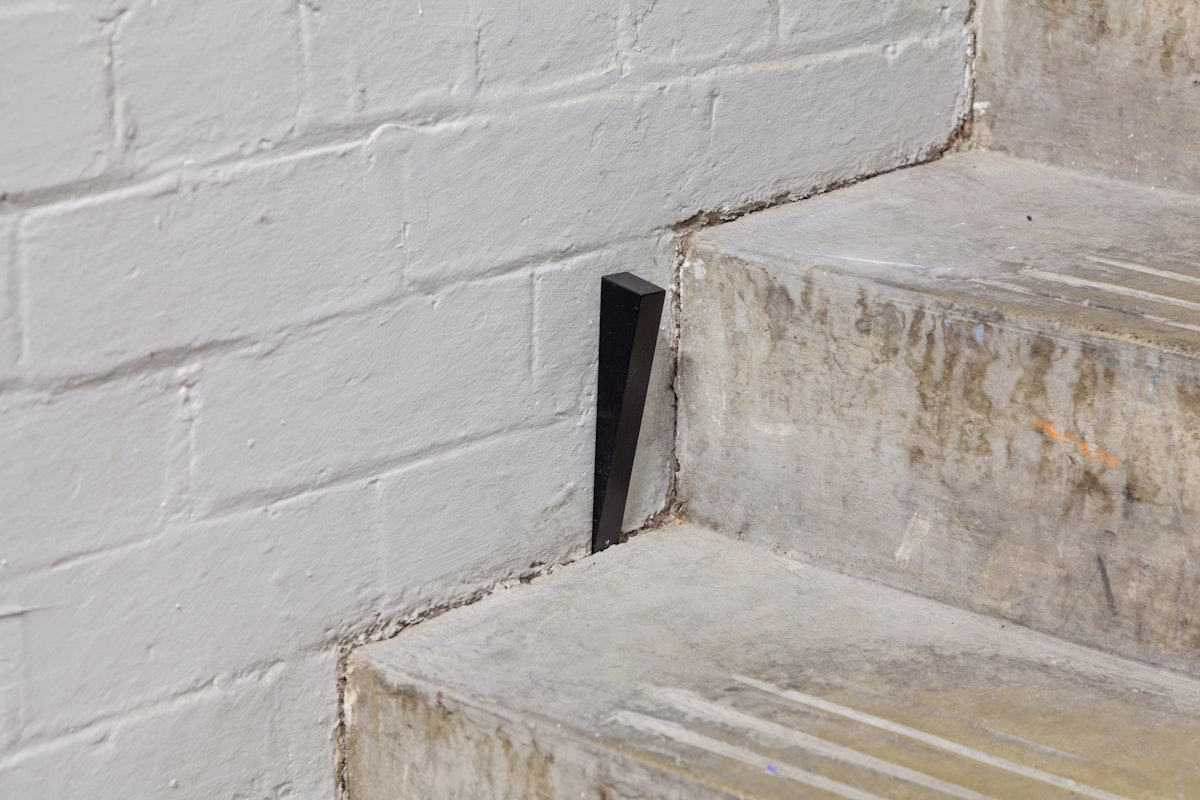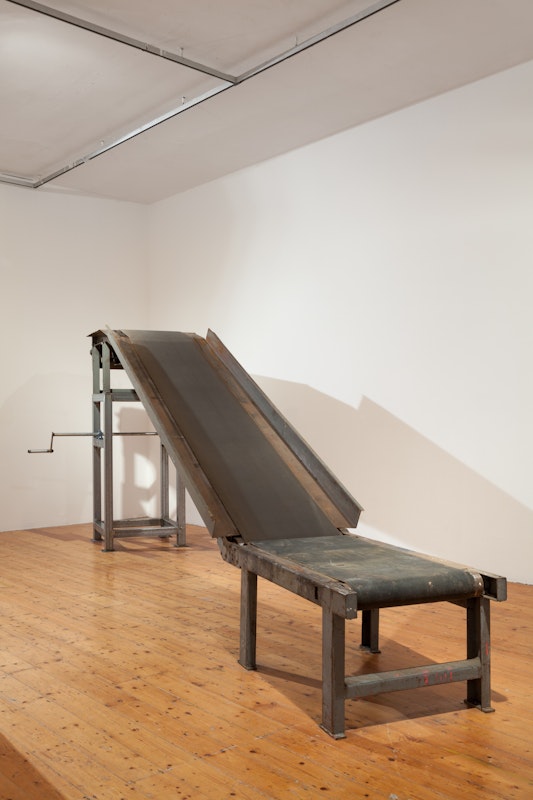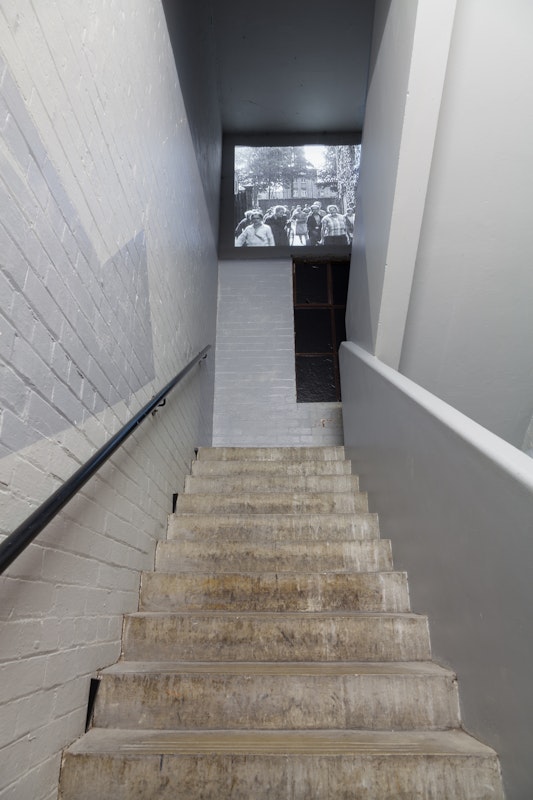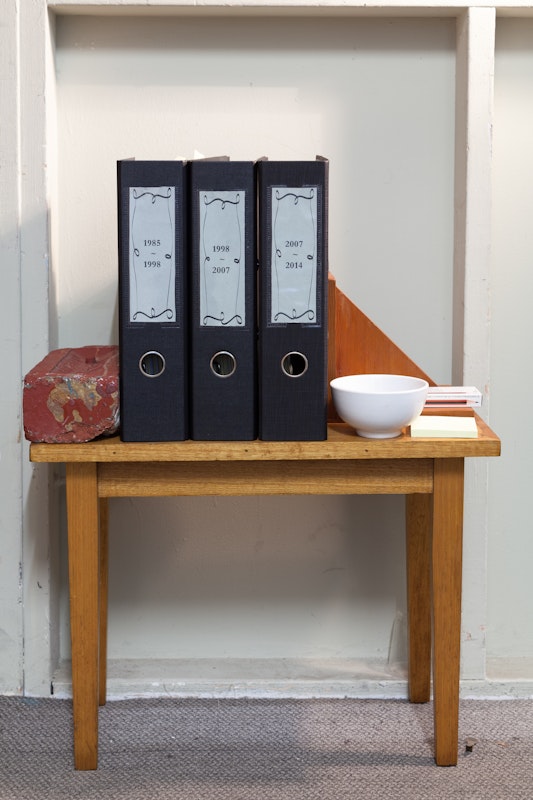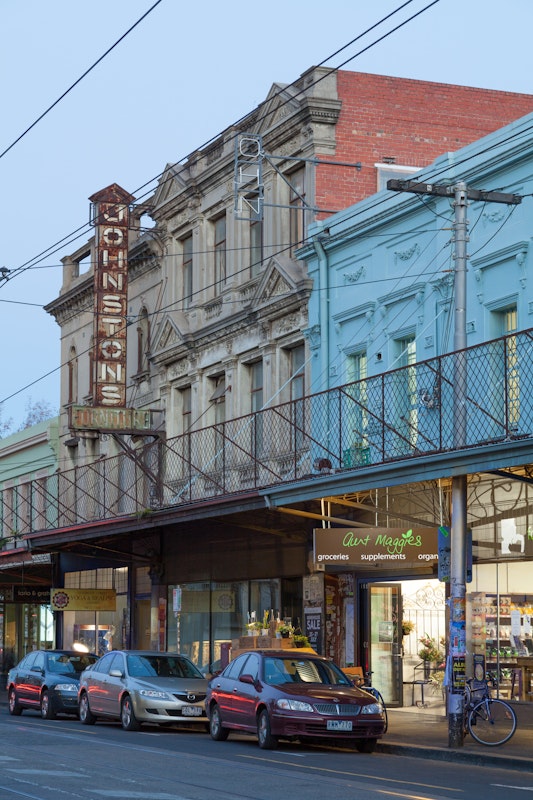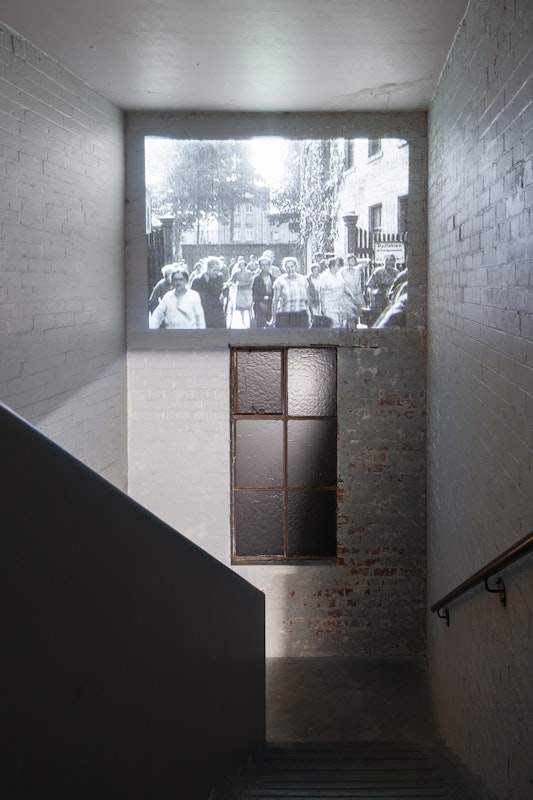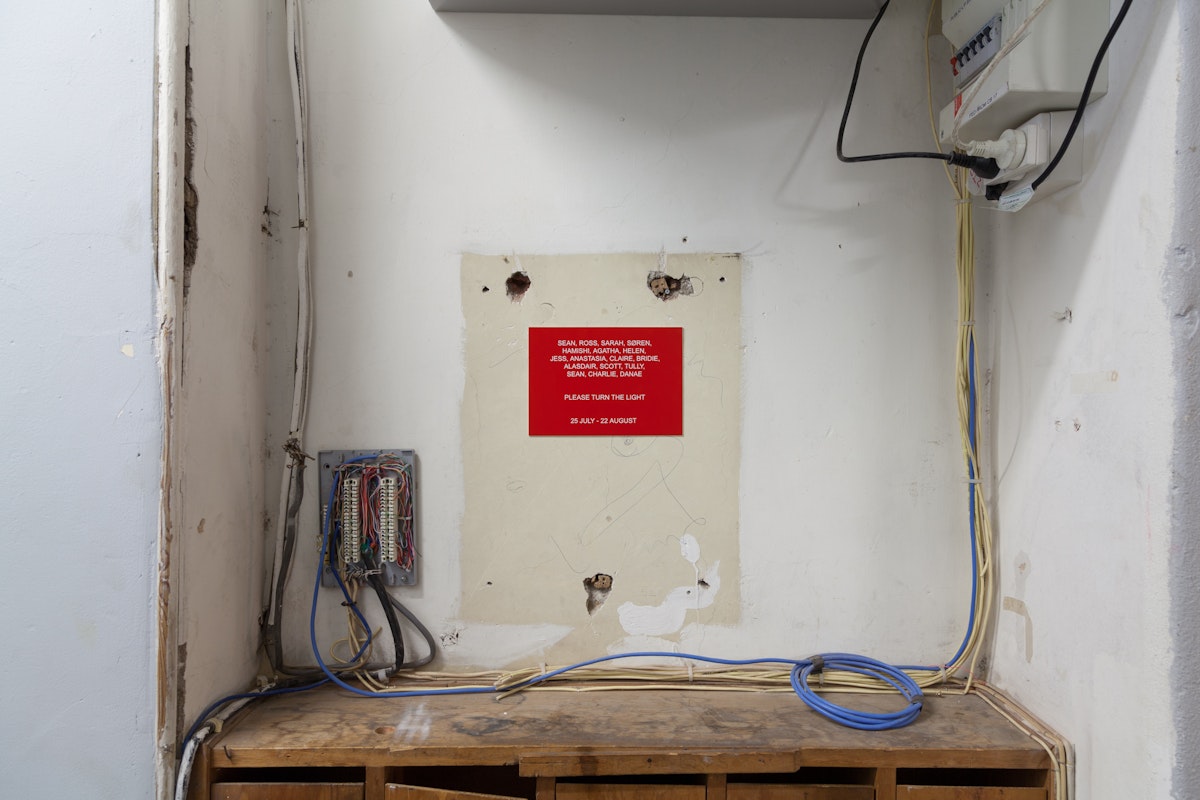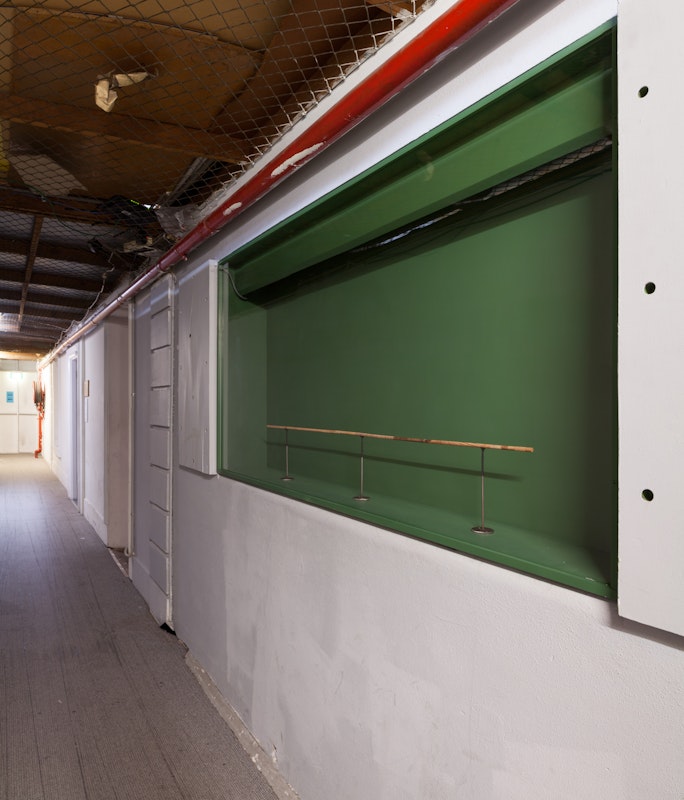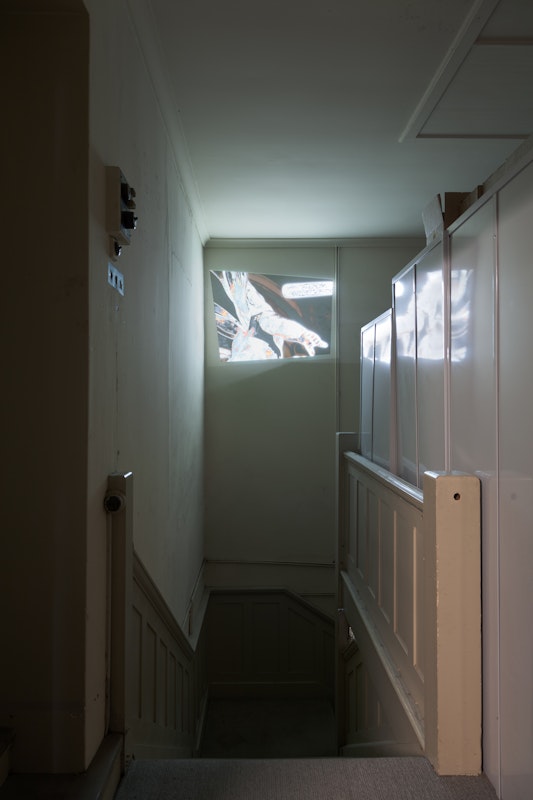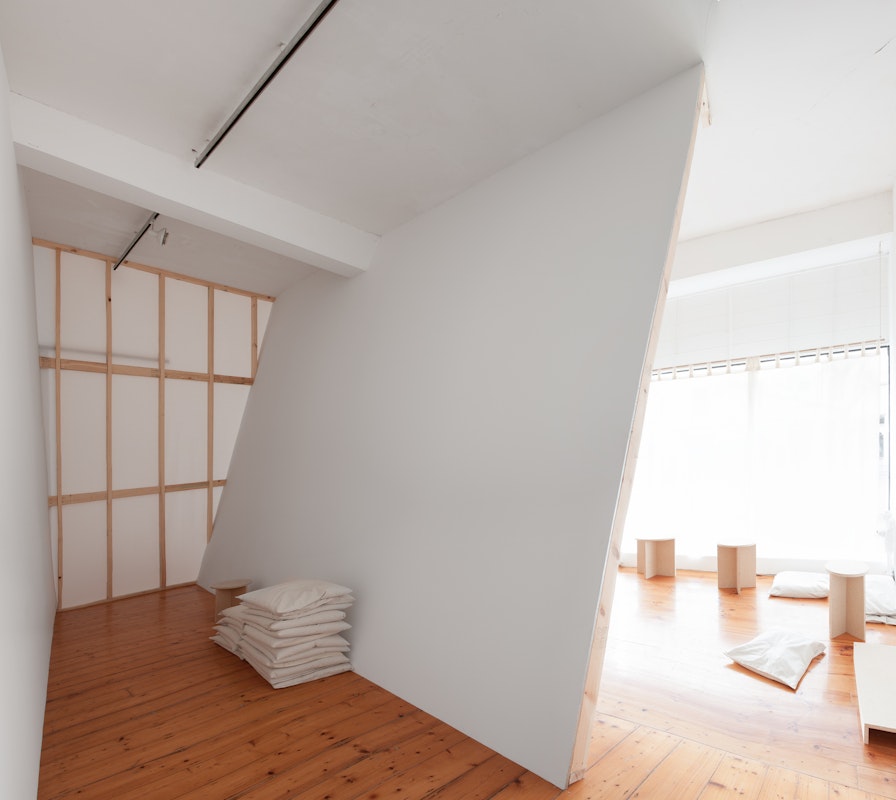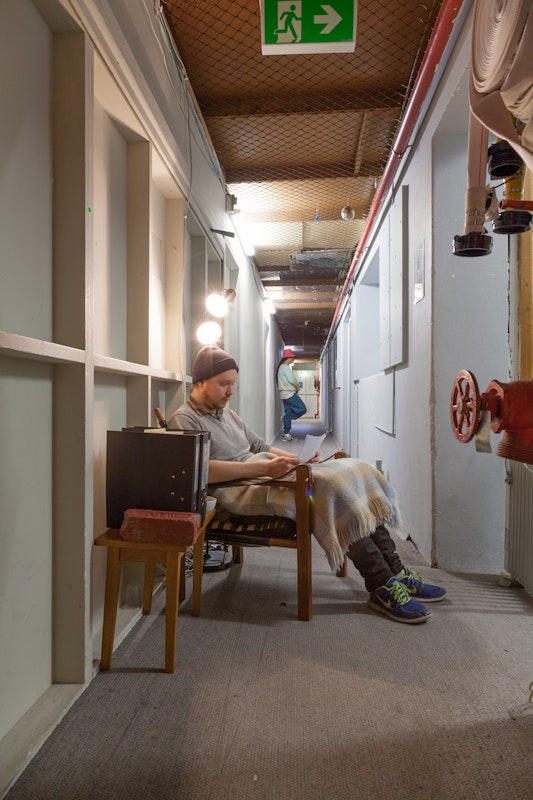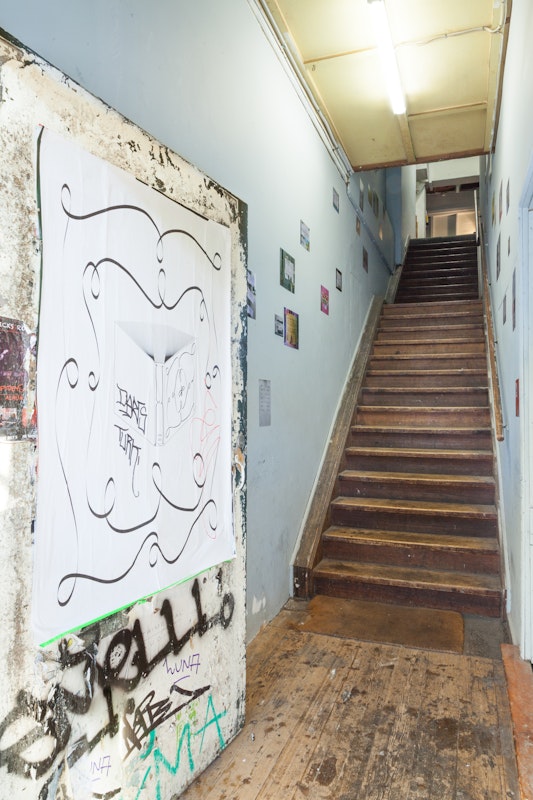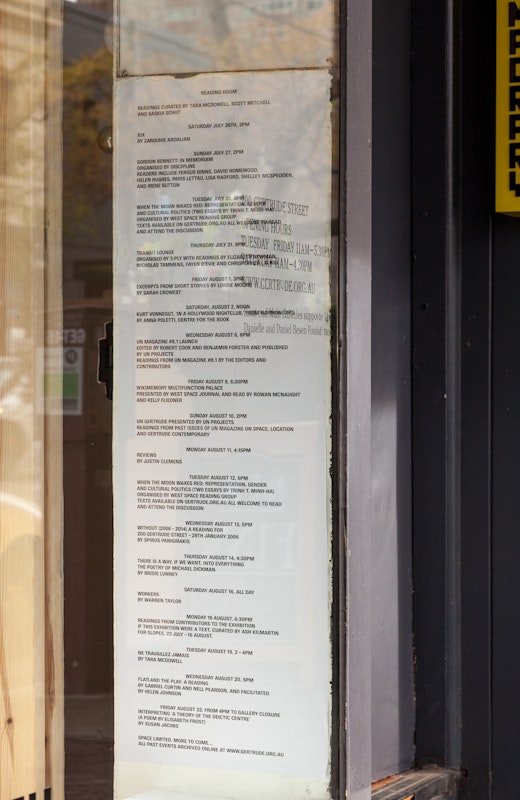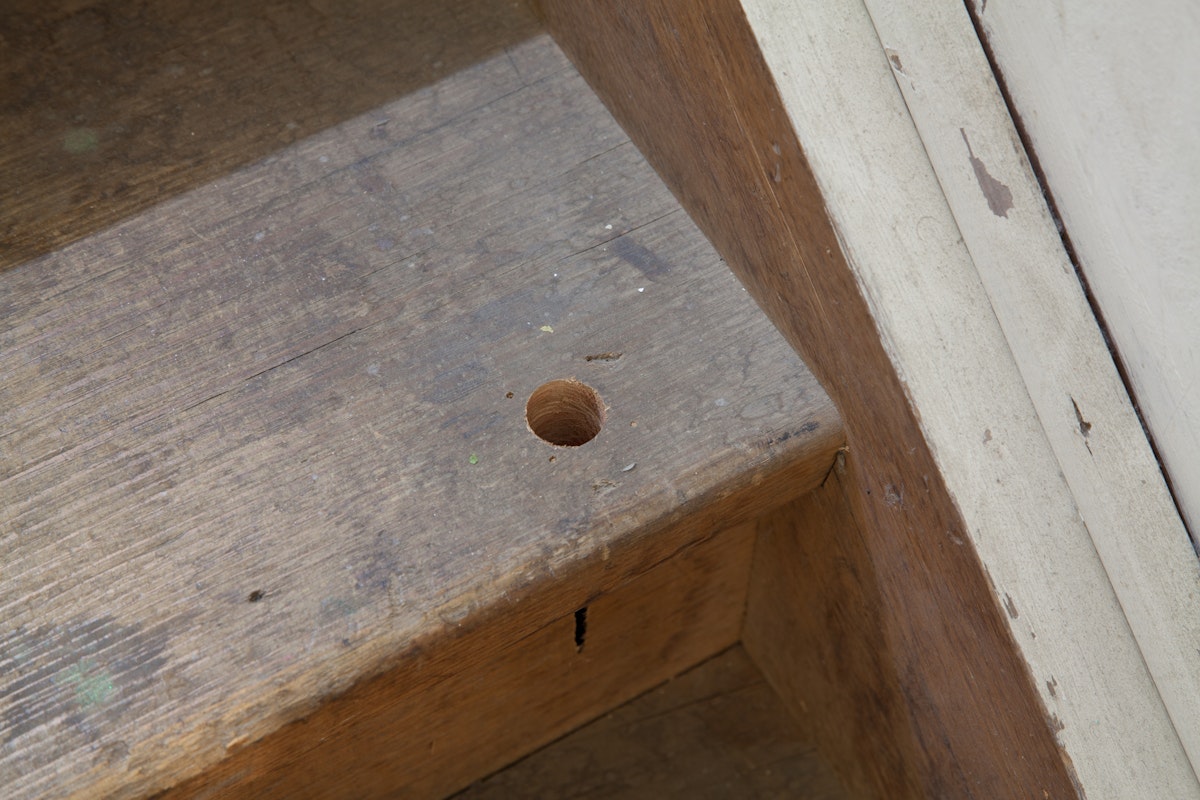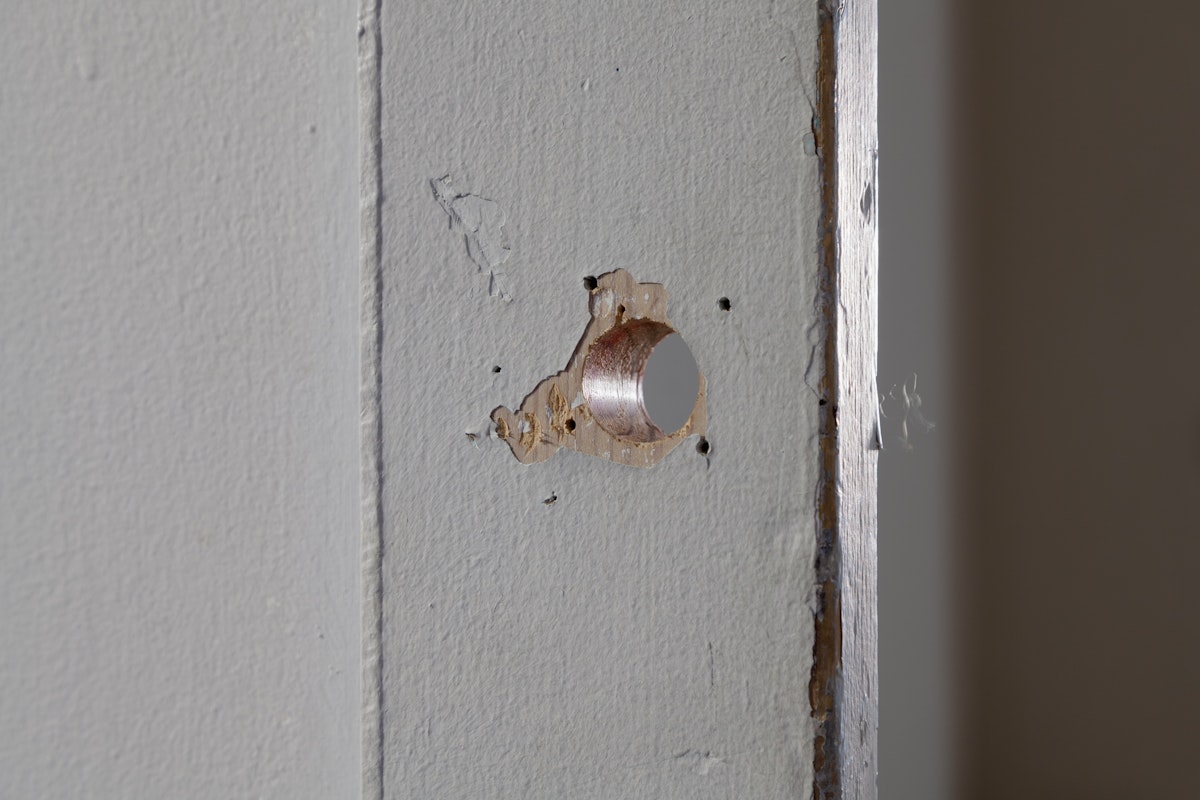
26 July -
23 August 2014
200 Gertrude Street
200 Gertrude Street, FitzroyZarouhie Abdalian (Oakland), Tony Birch (Melbourne), Trisha Donnelly (New York), Harun Farocki (Berlin), Agatha Gothe-Snape (Melbourne), Susan Jacobs (Melbourne), Otar Karalashvili (Tbilisi), Ash Kilmartin (Melbourne), Nicholas Mangan (Melbourne), Scott Mitchell And Saskia Schut (Melbourne), Laurie Richards (Melbourne), Fred Sandback (Usa), Allan Sekula (Usa)
Nothing Beside Remains activated the entire building at Gertrude Contemporary, and for the first time visitors were invited to explore nearly the entirety of this historic building to encounter works, many site-specific, by thirteen prominent Australian and international artists.
Nothing Beside Remains was the first curatorial project in Australia by Tara McDowell, Associate Professor and Director of the newly founded Curatorial Practice PhD program at MADA (Monash University Art Design and Architecture). It was the fourteenth exhibition in the annual flagship exhibition series Octopus, which provides a forum for new curatorial positions by inviting leading curators to devise an exhibition at Gertrude Contemporary.
The exhibition considered the building that houses Gertrude Contemporary as a living organism, accruing its history over time, with each renovation, addition, coat of paint, and temporary resident. The sprawling three-story brick structure was home to housewares manufacturer and emporium Johnston’s from 1889 until 1957, and the primary visual residue of this former life is the disused, landmark Johnston’s sign on the front of the building. Ash Kilmartin reilluminated the sign, which hung outside her studio window during her two year Gertrude residency, by mirroring its remaining neon letters in a new work. Nicholas Mangan similarly collapsed time by drilling samples of timber from around the building, from which he produced a core sample of the building striated with its various temporal and physical phases. Two artists showing in Melbourne for the first time included New York-based Trisha Donnelly, showing a new video work, and Oakland-based Zarouhie Abdalian, who installed a new sculptural intervention dispersed throughout Gertrude Contemporary.
The exhibition’s title, Nothing Beside Remains, derives from a line in Percy Bysshe Shelley’s “Ozymandias” that conjures the impermanence and decay of the manmade. The exhibition considered the building’s many former lives, its present, and its future— anticipating the possibility that Gertrude Contemporary would be moving out of the building in the coming years. For An Uncertain Reader, Agatha Gothe–Snape asked Gertrude Studio Artists from the program’s 30-year history to nominate a text that influenced them during their residence. In a performative work that concerned both immaterial labour and access to knowledge, gallery invigilators will read the collated reader during the month-long exhibition, accumulating the collective labour of their reading in the process.
Nothing Beside Remains addressed imbrications between artistic and industrial labour, textile and craft,mass and artisanal production. American artist Allan Sekula examined the social conditions of labour throughout his career, and in Untitled Slide Sequence photographed employees ending their shift at a San Diego aerospace factory in 1972. In the second half of the twentieth century, 200 Gertrude Street was occupied by various textile manufacturers, paper manufacturers, art suppliers and auctions rooms, so both production and display have coexisted at the site for over a century. This extended period of time, marked by the emergence of industrial, post-Fordist, immaterial and precarious labour, is charted by German filmmaker Harun Farocki’s Workers Leaving the Factory, which includes moving images of workers leaving factories throughout history, beginning with the first film ever made, by the Lumières brothers in 1895. By contrast, Otar Karalashvili presents photographs of signs posted throughout Tbilisi, the capital of Georgia, by people searching for work, a collective portrait of a city dependent on informal economies.
Susan Jacobs re-installed the conveyor belt that previously functioned on site and has since been in pieces in an upstairs hallway. Two subtle works by American artist Fred Sandback will act upon the space, encouraging a new perspective on a well-known, well-worn site. Archival photographs by Laurie Richards document a nearby Collingwood textile factory in the 1950s. And, Melbourne writer Tony Birch gave a walking tour touching on the Indigenous, immigrant, working class histories of Fitzroy on Saturday 16 August.
Taking advantage of the space’s real estate—and former life as a shop storefront— the front gallery promoted Melbourne’s independent arts publishers and play host to a series of events by various collaborators. Saskia Schut and Scott Mitchell have organised readings by artists, writers, designers, and publishers. The front gallery will subtly respond to the tenor of the texts through alternation of the atmosphere, lighting, time of day, or refreshments. Readings will be recorded and played continuously in the space and will also be archived on the Gertrude Contemporary website. More details about the schedule of readings and events will be announced soon.
This project has been made possible by the support of the Besen Family Foundation and the Consulate General of the United States, Melbourne.
This exhibition is supported by Proclaim Management Solutions.
